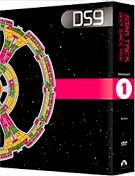They’re just teasing us now. I’ve been waiting to learn what the San Jose Semaphore says, and now this just in, courtesy of Ray:
San Jose scientists Bob Mayo and Mark Snesrud have been revealed as the two best cyber-sleuths in Silicon Valley. The pair each cracked the code of the San Jose Semaphore, which has been perplexing commuters and downtown visitors since its bright yellow wheels started spinning atop the Adobe building last August.
Mayo and Snesrud are being honored at a news conference this afternoon at San Jose City Hall. At the event, Mayor Chuck Reed and City Councilman Sam Liccardo will reveal what the code says.
Perhaps another secret will be revealed, too: Just how much time did Mayo and Snesrud spend obsessing over the art project’s spinning disks and just what do they do that gives them that much free time?
Joining the party by phone will be new media artist Ben Rubin, who designed the project. The semaphore is made up of four 10-foot wide disks, which are each composed of 24,000 light-emitting diodes. The disks each have a dark line going from one end to another and twirl around every eight seconds to create a new pattern.
I’m gonna get on my bike and get over to City Hall to make sure they finally, once and for all, tell us.
And it had better be good. Not, say, a message saying “You are reading the San Jose Semaphore.”
Update, 4pm: And…
San Jose Semaphore’s message atop Adobe building is . . .
By Sal Pizarro
Mercury NewsThe code is cracked.
And for anyone who thought a simple message was being transmitted by the rotating disks atop the Adobe tower in downtown San Jose, boy, were you wrong.
The message of San Jose Semaphore is the entire text of the Thomas Pynchon book, “The Crying of Lot 49.” [Wikipedia entry]
The solution was discovered by two Silicon Valley tech workers, Bob Mayo and Mark Snesrud, who received a commendation at San Jose City Hall today.
Using both the rotating disks and the art project’s audio broadcast, they deciphered a preliminary code based on the James Joyce novel, “Ulysses,” which was the key to solving the entire message. It took them about three weeks.
“It was not a real easy thing to figure out,” said Snesrud, a chip designer for Santa Clara based W&W Communications.
Ben Rubin, the New York artist who developed the project, applauded the duo’s “computational brute force” in finding the message.
“I’m especially glad the code was cracked and that it was done in a very classical way,” Rubin said.
The Pynchon book, written in the mid-1960s, is set in a fictional California city filled with high-tech campuses. It follows a woman’s discovery of latent symbols and codes embedded in the landscape and local culture, Rubin said.
The semaphore is made up of four 10-foot wide disks, which are composed of 24,000 light-emitting diodes. The disks each have a dark line going from one end to another and twirl around every eight seconds to create a new pattern.
It made its debut on Aug. 7, 2006 as part of the ZeroOne digital art festival. Rubin said there are no plans to stop the semaphore or change its message – at least for the time being.
“It’ll change the way people look it,” Rubin said of having the solution known. “Maybe in a few years, we’ll revisit it.”
Now here’s the thing: in this day and age, I fully expect a copyright suit to be filed in the next few days. After all, a copyrighted work was being broadcast from the Adobe building downtown for the last year.
PDF: Code details
PDF: How it was cracked

I think it’s been saying “Error 404 – Page not found” the whole time.
“Don’t forget to drink your Ovaltine”
Don’t you mean “Rich, Chocolate Ovaltine”?